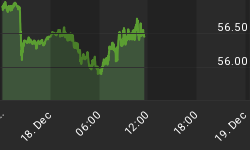
We are great fans of Tom Williams and his two books ('Master the Markets'* and 'The Undeclared Secret that Drive the Stock Market'*) in which he discusses his adaptation of Richard Wyckoff methodology. Tom Williams named his approach the 'Volume Spread Analysis' or 'VSA' and it is based on the bar by bar study of volume (or relative volume), the close and the range of the bar (high less low) to judge the contest between demand and supply.

There is a high correlation with VSA and Richard Wyckoff's bar by bar determination, many of the definitions are the same yet the name may differ.
*Note: See our education page for details.
Wyckoff Accumulation Phase Chart

For example:
| VSA Definitions | Wyckoff Defintions | ||
| Tests Failed Test Shakeouts No demand No Supply Stopping volume Pushing through supply Upthrust Selling Climax Buying climax Climactic action Support Resistance Trap up/down move No result after strong effort Selling/buying pressure Bottom reversal End of a rising market Bag Holding | Automatic rally Buying Climax Backing upto ice Breaking the ice Backup to edge of creek Critical support (creek) First time over ice Critical resistance (ice) Jumping across the creek (or JOC) Last point of Support (Demand) Last point of Supply Mark down Mark up Preliminary support (Demand) Preliminary supply Sign of strength Sign of weakness Secondary test Terminal shake out (Spring) Terminal thrust Up thrust after distributuon Selling Climax Trading Range Up thrust | ||
| Reference: Master the Markets | Reference: Richard Wyckoff method | ||
Wyckoff definitions are designed and named in a manner to support the Wyckoff 9 trading rules through the trading range phases A to E, where as Williams definitions are designed to cover all the bar by bar action no matter the phase. We like both. Both are designed to help judge the contest between supply and demand.
Both Wyckoff and Tom Williams adhere to the importance of market phases ([re]accumulation, [re]distribution, mark up, mark down), but we feel the Wyckoff definitions are tailor made to determine the change over from (re) accumulation to mark up or (re) distribution to mark down more so than Tom Willams defintions, the reader may think this is splitting hairs, but we think this is the case as Tom Williams in his books do not present his definitions in the framework of Wyckoff trading range phases A to E with the 9 Wyckoff trading rules.
Tom Williams VSA trading setups are designed around the Wyckoff phases known as 'Signs of Weakness' (SOW) or 'Signs of strength' (SOS). As these phases are an important part of the Wyckoff trading range D and E phase, (Reminder: Wyckoff D and E phase are the price break out phases) we feel that the VSA setups are best executed only when the pure mark up (or down) phase has been clearly established.
A VSA 'Sign of Weakness' (SOW) setup would consist of a pattern of 3 to 20 bars that include any combination of the following VSA bar types: Buying climax, No Demand, Suppy overcoming demand, Up Thrusts, End of a Rising Market, Top Reversal, Failed Test.
A VSA 'Sign of Strength' (SOS) setup would consist of a pattern of 3 to 20 bars that include any combination of the following VSA bar types: Selling Climax, No Supply, Demand overcoming supply, Test, Two bar reversal, Shakeout, Test of supply after Shakeout, Bag Holding, Test of a Break Out.
In summary our view for better success with VSA trading setups:
1) VSA Sign of Weakness (SOW) setups: Are best executed when a pure mark down phase has been confirmed. Wyckoff 2.0 requires that price be underneath the Gann Angle 1x2 (preferred) or 1x1 and it is best that price is below broken support for a pure mark down phase to present. See the red shade area in the first image above.
2) VSA Sign of Strength (SOS) setups: Are best executed when a pure mark up phase has been confirmed. Wyckoff 2.0 requires that price be above the Gann Angle 1x2 (preferred) or 1x1 and it is best that price is above broken resistance for a pure mark up phase to present. See the blue shade area in the first image above.
When either a pure mark up or down phase can not be established then the phase may either be accumulation or distribution and this market phase was considered by Richard Wyckoff as an unattractive market phase to profit. We also hold this view and we also feel VSA traders should as well.
The reader may be very confused with all the lingo and definitions, after you read the material behind the subject matters the confusion will be removed.
We would also like to bring to the attention of the reader that from out post Wyckoff 2.0 vs Others that everything works when the chart is nice and pretty, and a chart is always very pretty when either pure mark up or down is clearly established.
Reading References:
Wyckoff 2.0
Richard Wyckoff method
Master the Markets
The Undeclared Secret that Drive the Stock Market















